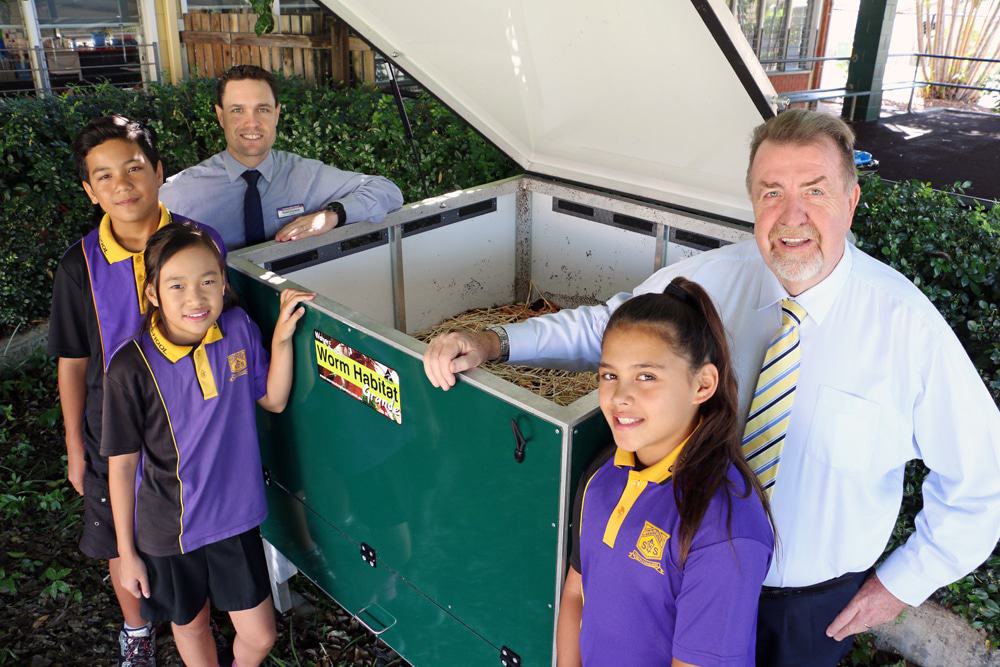
Goodna State School students Reearn, Jennifer and Jordis with principal Daniel Dempsey and Division 2 Cr Paul Tully check out the school’s worm farm.
Worms are spreading at Goodna State School but it’s nothing to be alarmed about – in fact it’s all in the name of science.
Students at Goodna State School are learning valuable lessons about sustainability and entrepreneurship following the installation of a new worm farm.
It is the latest addition to the school’s award-winning science program and was made possible by divisional funding from Cr Paul Tully and Ipswich City Council’s Community Development Grant program.
School principal Daniel Dempsey said the school had a strong focus on STEM – science, technology, engineering and maths – and the worm farm was a perfect fit.
“If you throw a pebble in a pond it creates ripples and that’s what we’re doing here,” he said.
“It’s engaged the entire school community and allows students to learn about science and technology while also keeping the environment and sustainability front and centre.
“Each classroom is collecting their food scraps for the worm farm, with about 20 litres worth of scraps added each day.
“When the scraps are broken down they create a liquid which is good for the garden and that will be used by the school’s young entrepreneurs group to sell back to the community.”
Cr Tully congratulated Goodna State School on its efforts to promote sustainability.
“Goodna State School has been a leader in encouraging sustainability and in particular the value of science to its students for many years,” he said.
“The students of today are tomorrow’s leaders and it’s exciting to see the students passionate about science and making a difference in their community.”
Want to get in on the act? Here’s some tips to help you set up your own worm farm:
1. Get shady
Make sure you set up your worm farm in a cool, shaded spot. Remember they don’t like the sun.
2. Choose the right worms for the job
Earth worms and worm farm worms aren’t the same – fill your worm with compost worms (also known as red or tiger worms). You usually need about 1,000 to get you started. You can buy them at a local nursery.
3. Toothless vegetarians
Worms don’t have teeth or eat meat. They will thrive when you feed them fruit and vegetable and be especially grateful if you cut their food into pieces first.
4. Add juice and coffee
Treat your worms to the coffee granules and the pulp from the juicer. They will even eat your discarded teabag. But remember, they don’t like citrus or other acidic foods, so orange pulp is a no-go.
5. Keep the garlic away
Worms aren’t fond of onions and garlic.
6. Paper and egg shells are okay
Worms don’t mind a bit of shredded paper and eggshells, if you crush them up.
7. Don’t be a feeder
Don’t add too much food at once. Worms can only eat half their body weight. Be sure to keep the farm well drained too.
8 Cover them up
Keeping your worms covered helps keep the moisture in and the light out, encouraging worms to come to the surface and feed. A black plastic sheet is good in cool weather and in warmer weather, damp hessian or newspaper works well.
Source: For more tips visit here.

